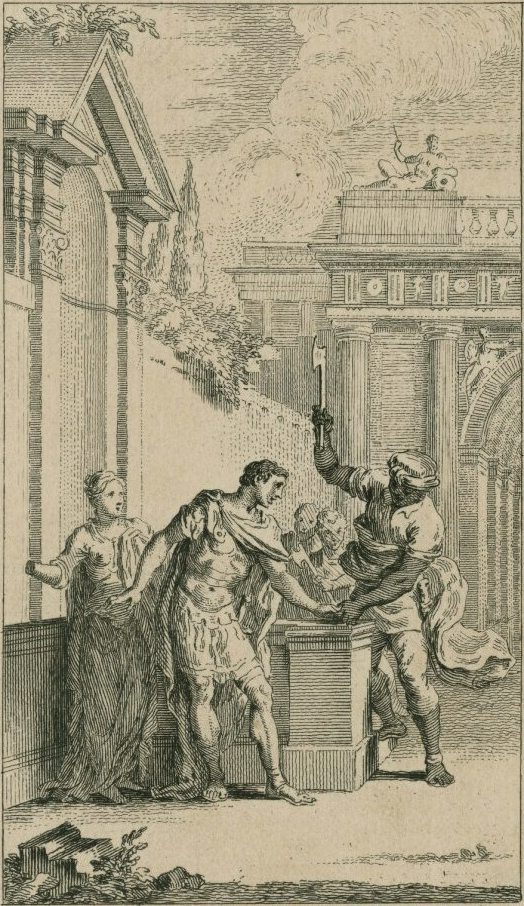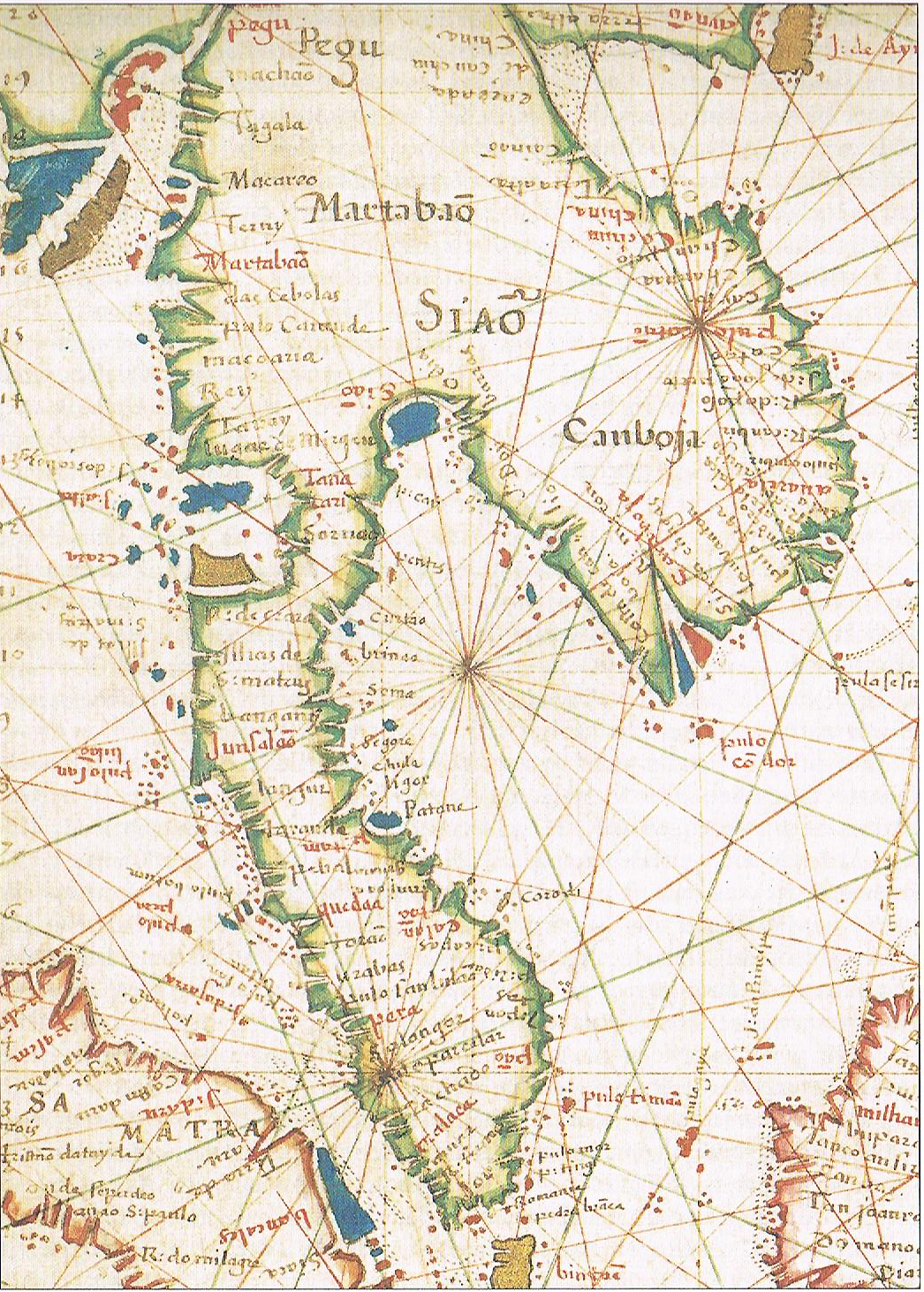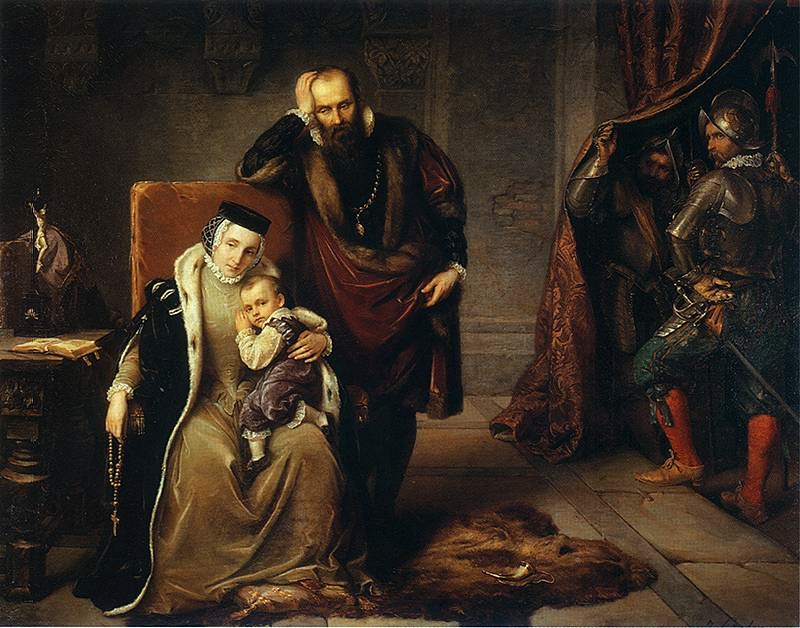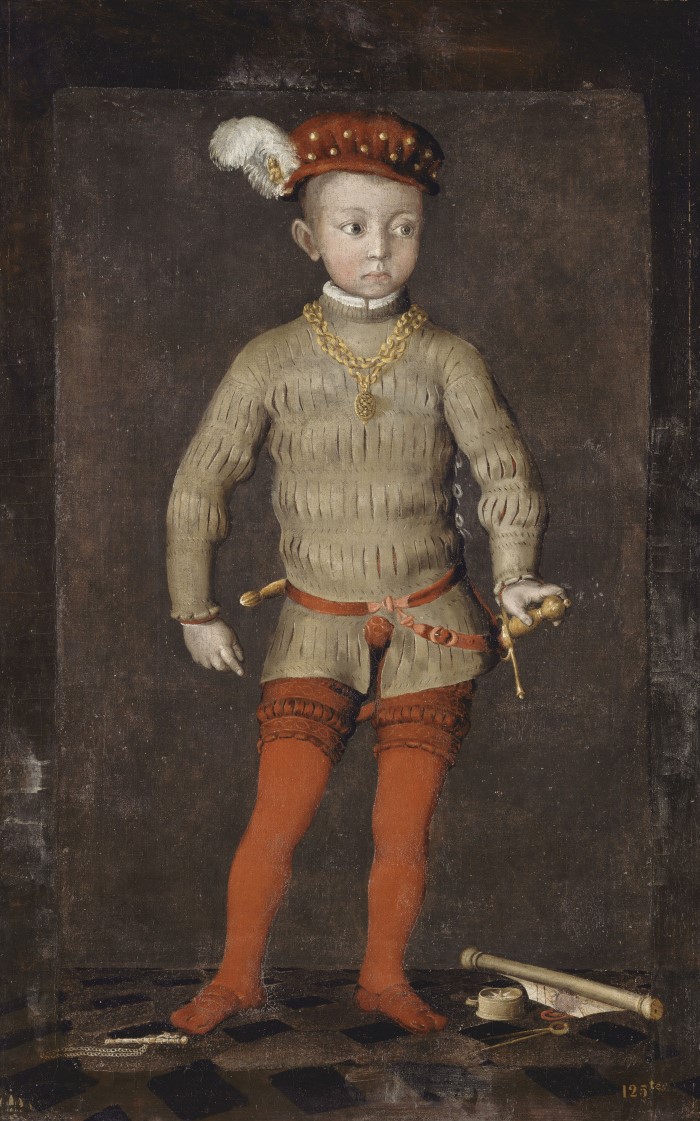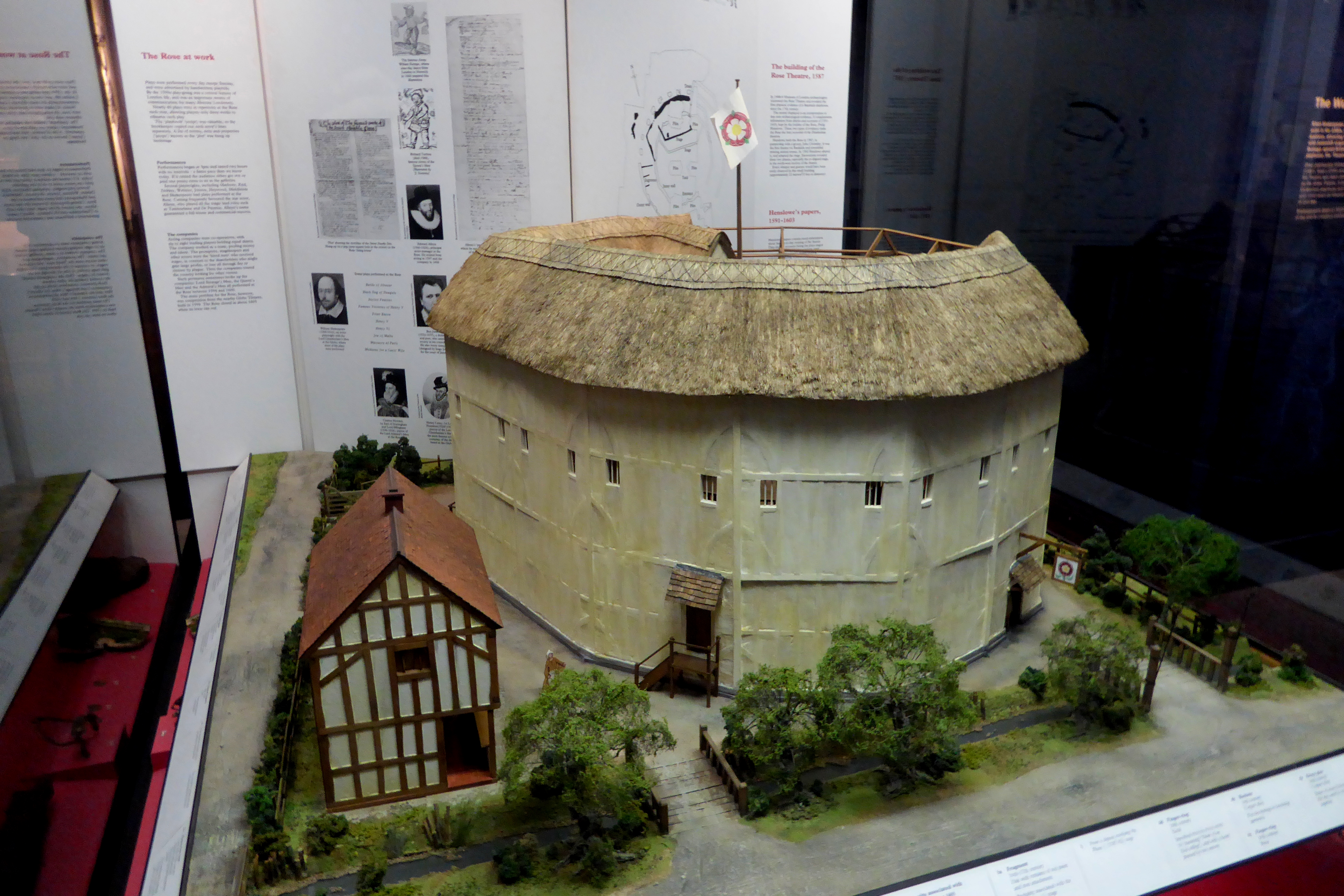|
1594
Events January–March * January 3 – Longvek, the capital of the Kingdom of Cambodia, is conquered by the army of the Ayutthaya Kingdom (now Thailand), commanded by King Naresuan, after more than two years of war. King Chey Chettha I of Cambodia is able to flee to Laos, along with the former King Satha I, but the rest of the royal family is taken hostage, along with Prince Srei Soriyopear. * January 17 – Construction of the Junagarh Fort in the Mughal Empire's principality of Bikaner (now in India's Rajasthan state) is completed after almost five years. * January 24 – William Shakespeare's play ''Titus Andronicus'', is given its first performance, presented by the Admiral's Men company of players at '' The Rose'' in London. * January 25 – The siege of Enniskillen Castle in Ireland (at County Fermanagh) is started by English commander John Dowdall, but is abandoned after one month. * February 2 – England's Admiral Richard Hawkins ... [...More Info...] [...Related Items...] OR: [Wikipedia] [Google] [Baidu] |
Titus Andronicus
''The Lamentable Tragedy of Titus Andronicus'', often shortened to ''Titus Andronicus'', is a Shakespearean tragedy, tragedy by William Shakespeare, believed to have been written between 1588 and 1593. It is thought to be Shakespeare's first tragedy and is often seen as his attempt to emulate the violent and bloody revenge plays of his contemporaries, which were extremely popular with audiences throughout the 16th century. Titus Andronicus (character), Titus, a Legatus, general in the Roman army, presents Tamora, Queen of the Goths, as a slave to the new Roman emperor, Saturninus. Saturninus takes her as his wife. From this position, Tamora vows revenge against Titus for killing her son. Titus and his family retaliate, leading to a cycle of violence. ''Titus Andronicus'' was initially very popular, but by the later 17th century it was not well esteemed. The Victorian era disapproved of it, largely because of its graphic violence. Its reputation began to improve around the mid ... [...More Info...] [...Related Items...] OR: [Wikipedia] [Google] [Baidu] |
Siege Of Enniskillen (1594)
The siege of Enniskillen took place at Enniskillen in Fermanagh, present day Northern Ireland, in 1594 and 1595, during the Nine Years' War. In February 1594, the English had captured Enniskillen Castle from the Irish after a waterborne assault and massacred the defenders after they surrendered. From May 1594, an Irish army under Hugh Maguire and Cormac MacBaron O'Neill besieged the English garrison in the castle, and in August they defeated an English relief force. A second relief force was allowed to resupply the garrison, but the castle remained cut off. Eventually, in May 1595, the English garrison surrendered to the Irish and were then massacred. Background In 1593, Hugh Maguire, Chief of the Name and Lord of Fermanagh, had objected to the behaviour of the newly-appointed English Crown sheriff Humphrey Willis. As he had done before being expelled by Hugh Roe O'Donnell from Tyrconnell in 1592, Willis was cattle raiding and plundering throughout Clan Maguire territory. Mag ... [...More Info...] [...Related Items...] OR: [Wikipedia] [Google] [Baidu] |
Siamese–Cambodian War (1591–1594)
The Siamese–Cambodian War (1591–1594), was a military conflict fought between the Ayutthaya Kingdom and the Kingdom of Cambodia. The war began in 1591 when Ayutthaya invaded Cambodia in response to continuous Khmer raids into their territory. The Kingdom of Cambodia was also facing religious disagreements within the country. This gave the Siamese a perfect opportunity to invade. The first invasion was interrupted before it achieved its goals. The Ayutthayan king Naresuan returned two years later, eventually subjugating the whole country and finally sacking the Cambodian capital of Longvek on 3 January 1594. Background Prince Naret, also known as the "Black Prince" (), was born in the city of Phitsanulok on 25 April 1555. He was the son of Phitsanulok regent Mahathammarachathirat and his queen consort, Wisutkasat. His mother was a daughter of Maha Chakkraphat and queen consort Suriyothai. His father was a Sukhothai noble who had defeated Worawongsathirat in 1548 and put ... [...More Info...] [...Related Items...] OR: [Wikipedia] [Google] [Baidu] |
Post-Angkor Period
The post-Angkor period of Cambodia (), also called the Middle period, refers to the historical era from the early 15th century to 1863, the beginning of the French protectorate of Cambodia. As reliable sources (for the 15th and 16th centuries, in particular) are very rare, a defensible and conclusive explanation that relates to concrete events that manifest the decline of the Khmer Empire, recognised unanimously by the scientific community, has so far not been produced. However, most modern historians have approached a consensus in which several distinct and gradual changes of religious, dynastic, administrative and military nature, environmental problems and ecological imbalance coincided with shifts of power in Indochina and must all be taken into account to make an interpretation. In recent years scholars' focus has shifted increasingly towards human–environment interactions and the ecological consequences, including natural disasters, such as flooding and droughts. Stone ... [...More Info...] [...Related Items...] OR: [Wikipedia] [Google] [Baidu] |
Sigismund III Vasa
Sigismund III Vasa (, ; 20 June 1566 – 30 April 1632 N.S.) was King of Poland and Grand Duke of Lithuania from 1587 to 1632 and, as Sigismund, King of Sweden from 1592 to 1599. He was the first Polish sovereign from the House of Vasa. Religiously zealous, he imposed Catholicism across the vast realm, and his crusades against neighbouring states marked Poland's largest territorial expansion. As an enlightened despot, he presided over an era of prosperity and achievement, further distinguished by the transfer of the country's capital from Kraków to Warsaw. Sigismund was the son of King John III of Sweden and his first wife, Catherine Jagiellon, daughter of King Sigismund I of Poland. Elected monarch of the Polish–Lithuanian Commonwealth in 1587, he sought to unify Poland and Sweden under one Catholic kingdom, and when he succeeded his deceased father in 1592 the Polish–Swedish union was created. Opposition in Protestant Sweden caused a war against Sigismund headed ... [...More Info...] [...Related Items...] OR: [Wikipedia] [Google] [Baidu] |
Admiral's Men
The Admiral's Men (also called the Admiral's company, more strictly, the Earl of Nottingham's Men; after 1603, Prince Henry's Men; after 1612, the Elector Palatine's Men or the Palsgrave's Men) was a playing company or troupe of actors in the Elizabethan and Stuart eras. It is generally considered the second most important acting troupe of English Renaissance theatre (after the company of Shakespeare, the Lord Chamberlain's or King's Men). Beginnings They were first known as the Lord Howard's Men, named after their patron Charles Howard, 1st Earl of Nottingham. The company played once at Court on December 1576 (the play was called ''Tooley''), again on 17 February 1577 (''The Solitary Knight''), and a third time the following Christmas season, 5 January 1578 (all dates new style). They toured widely, from Bath to Nottingham, in the years 1577–79. A powerful patron like Howard could make a great difference in a company's fortunes. Though there is little evidence that he ... [...More Info...] [...Related Items...] OR: [Wikipedia] [Google] [Baidu] |
Henry IV Of France
Henry IV (; 13 December 1553 – 14 May 1610), also known by the epithets Good King Henry (''le Bon Roi Henri'') or Henry the Great (''Henri le Grand''), was King of Navarre (as Henry III) from 1572 and King of France from 1589 to 1610. He was the first monarch of France from the House of Bourbon, a cadet branch of the Capetian dynasty. He pragmatically balanced the interests of the Catholic and Protestant parties in France, as well as among the European states. He was assassinated in Paris in 1610 by a Catholic zealot, and was succeeded by his son Louis XIII. Henry was baptised a Catholic but raised as a Huguenot in the Protestant faith by his mother, Queen Jeanne III of Navarre. He inherited the throne of Navarre in 1572 on his mother's death. As a Huguenot, Henry was involved in the French Wars of Religion, barely escaping assassination in the St. Bartholomew's Day massacre. He later led Protestant forces against the French royal army. Henry inherited the thro ... [...More Info...] [...Related Items...] OR: [Wikipedia] [Google] [Baidu] |
Richard Hawkins
Admiral Sir Richard Hawkins (or Hawkyns) (c. 1562 – 17 April 1622) was a 17th-century English seaman, explorer and privateer. He was the son of Admiral Sir John Hawkins. Biography He was from his earlier days familiar with ships and the sea, and in 1582 he accompanied his uncle, William Hawkins, to the West Indies. In 1585 he was captain of a galliot in Drake's expedition to the Spanish main, in 1588 he commanded a queen's ship against the Armada, and in 1590 his father's expedition at the coast of Portugal. In 1593 he purchased the galleon ''Dainty'' (built for the voyage of discovery), a vessel originally built for his father and used by him in his expeditions, and sailed for the West Indies, the Spanish Main and the South Seas. It seems clear that his project was to prey on the oversea possessions of Spanish crown. Hawkins, however, in an account of the voyage written thirty years afterwards, maintained, and by that time perhaps had really persuaded himself, that ... [...More Info...] [...Related Items...] OR: [Wikipedia] [Google] [Baidu] |
Junagarh Fort
Junagarh Fort is a fort in the city of Bikaner, Rajasthan, India. The fort was originally called Chintamani and was renamed Junagarh or "Old Fort" in the early 20th century when the ruling family moved to Lalgarh Palace outside the fort limits. It is one of the few major forts in Rajasthan which is not built on a hilltop. The modern city of Bikaner has developed around the fort.Michell p. 222Ring pp. 129–33 The fort complex was built under the supervision of Karan Chand, the Prime Minister of Raja Rai Singh, the sixth ruler of Bikaner, who ruled from 1571 to 1611 AD. Construction of the walls and associated moat commenced in 1589 and was completed in 1594. It was built outside the original fort of the city (the first fort built by Rao Bikaji), about from the city centre. Some remnants of the old fort are preserved near the Lakshmi Narayan temple.Ring p.129 Historical records reveal that despite the repeated attacks by enemies to capture the fort, it was not taken, except fo ... [...More Info...] [...Related Items...] OR: [Wikipedia] [Google] [Baidu] |
The Rose (theatre)
The Rose was an Elizabethan theatre, Elizabethan playhouse, built by theatre entrepreneur Philip Henslowe in 1587. It was the fifth public playhouse to be built in London, after the Red Lion (theatre), Red Lion in Whitechapel (1567), The Theatre (1576) and the Curtain Theatre, Curtain (1577), both in Shoreditch, and the Newington Butts Theatre, theatre at Newington Butts () – and the first of several playhouses to be situated in Bankside, Southwark, in a Liberty (division), liberty outside the jurisdiction of the City of London's civic authorities. Two of the earliest plays by William Shakespeare – Titus Andronicus and Henry VI, Part 1 – are recorded as having been performed there, as well as plays by dramatists such as Christopher Marlowe, Thomas Kyd, Robert Greene (dramatist), Robert Greene, George Peele, Thomas Dekker (writer), Thomas Dekker, Michael Drayton, Ben Jonson and Thomas Heywood. The Rose's archaeological remains were rediscovered in 1989 during the redevelopme ... [...More Info...] [...Related Items...] OR: [Wikipedia] [Google] [Baidu] |
February 2
Events Pre-1600 * 506 – Alaric II, eighth king of the Visigoths, promulgates the Breviary of Alaric (''Breviarium Alaricianum'' or ''Lex Romana Visigothorum''), a collection of " Roman law". * 880 – Battle of Lüneburg Heath: King Louis III of France is defeated by the Norse Great Heathen Army at Lüneburg Heath in Saxony. * 962 – '' Translatio imperii'': Pope John XII crowns Otto I, Holy Roman Emperor, the first Holy Roman Emperor in nearly 40 years. * 1032 – Conrad II, Holy Roman Emperor becomes king of Burgundy. * 1141 – The Battle of Lincoln, at which Stephen, King of England is defeated and captured by the allies of Empress Matilda. * 1207 – Terra Mariana, eventually comprising present-day Latvia and Estonia, is established. * 1428 – An intense earthquake struck the Principality of Catalonia, with the epicenter near Camprodon. Widespread destruction and heavy casualties were reported. * 1438 – Nine leader ... [...More Info...] [...Related Items...] OR: [Wikipedia] [Google] [Baidu] |
Chartres Cathedral
Chartres Cathedral (, lit. Cathedral of Our Lady of Chartres) is a Catholic cathedral in Chartres, France, about southwest of Paris, and is the seat of the List of bishops of Chartres, Bishop of Chartres. Dedicated in honour of the Virgin Mary ('Our Lady'), it was mostly constructed between 1194 and 1220. It stands on the site of at least five cathedrals that have occupied the site since the Diocese of Chartres was formed as an episcopal see in the 4th century. It is one of the best-known and most influential examples of High Gothic and Classic Gothic architecture. It was built above earlier Romanesque architecture, Romanesque basements, while its north spire is more recent (1507–1513) and is built in the more ornate Flamboyant style. "[O]ne of the most beautiful and historically significant cathedrals in all of Europe," it was designated a World Heritage Site by UNESCO in 1979, which called it "the high point of French Gothic architecture, French Gothic art" and a "masterpiece ... [...More Info...] [...Related Items...] OR: [Wikipedia] [Google] [Baidu] |

